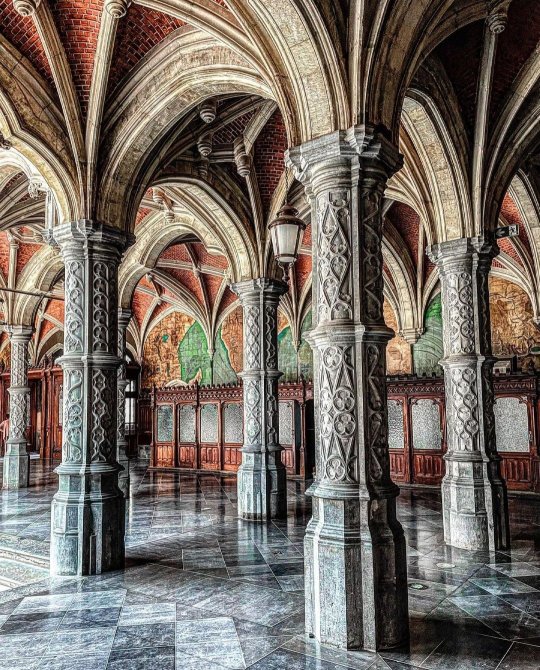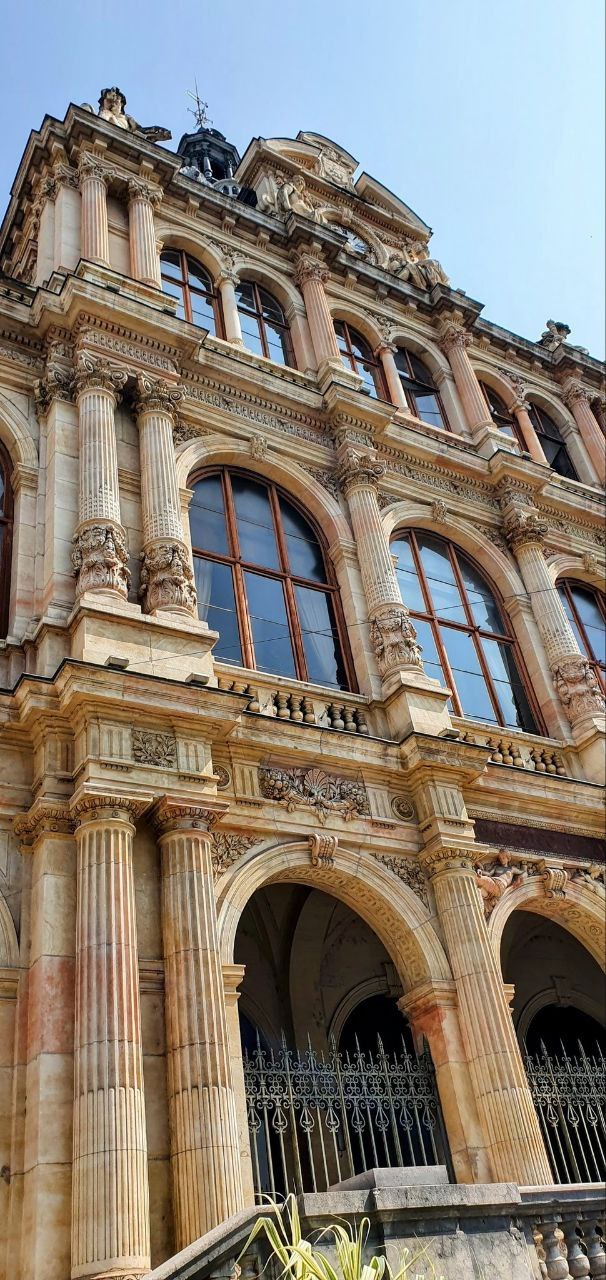#the bourse
Explore tagged Tumblr posts
Text

📍The Bourse of Antwerp, Belgium
#dark academia#light academia#classical#academia aesthetic#escapism#academia#books and libraries#classic literature#books#architecture#place#the bourse#antwerp#belgium#old#building#historical#travel#photography#royal core#cottage core#aesthetic#academic#mood#vibe tumblr#october
2K notes
·
View notes
Text
Eat This: Huli Huli Specials at Grubhouse in The Bourse Food Hall
Eat This: @PoiDogPhilly Huli Huli Sauce Specials at @GrubhousePhilly in @TheBoursePhilly. Go say hello to @jimmytrashtalk!
Did you know that Grubhouse in the Bourse has reopened after a winter slumber? No? Well, now you do. The Ameican comfort food stand in The Bourse food hall is back at it, slinging breakfast and lunch for tourists and non-tourists alike. This weekend they are featuring specials using Huli Huli Sauce made by Philly’s own Kiki Aranita of Poi Dog Philly. According to the website, the flavor profile…

View On WordPress
0 notes
Text

Oswald Heidbrinck (1858–1914) - La Bourse ou la mort! (The Stock Market or Death!)
illustration from 'Le Courrier français', April 11, 1886
source
#oswald heidbrinck#la bourse ou la mort!#the stock market or death!#le courrier français#19th century art#19th century#death#devil#sin#allegory#dark art#political art#satire#art#illustration#drawing
119 notes
·
View notes
Text

C'est le WE !!
Et rappel : c'est la bourse aux skis du Club Alpin Français de Besançon (CAF) aux Torcols, du 15/11 à 19h30 au 16/11 à 13h
Dépose et vente de matos de montagne, ski, ski de rando, ski de fond, raquettes, adultes, enfants, ....
#ski#snowboard#club alpin#besancon#torcols#bourse aux skis#ski de rando#ski de fond#raquettes#achat#vente#bourse#caf#caf besac#club alpin français
36 notes
·
View notes
Text

Wolford par Helmut Newton 1995, introduction en bourse de la société autrichienne Bregenz (Fritz HUMER et Rémi JALADIS) fatal 15, (palais de Chaillot, Paris avec le Ballet de Lausanne, Maurice Bejart)
35 notes
·
View notes
Text

Anne Bourse Charlotte’s skirt from Tokyo, 2022 Ink, felt pen, silk, wire at Crèvecœur, Paris. Photo: Alex Kostromin
20 notes
·
View notes
Text

#arca#arca1000000#The Light Comes in the Name of the Voice#02.03.2024#bourse de commerce#pinault collection#mine
85 notes
·
View notes
Text





















Bourse de Commerce, Pinault Collection, Paris, France — Photo by Thibault Jorge
#vsco#art#architecture#bourse de commerce#tadao ando#bertrand lavier#marcel duchamp#jeff koons#damien hirst#museum#exhibition#gallery
18 notes
·
View notes
Text
oh hell yes, alamo's gonna be showing nosferatu with open captioning while I'm in NYC this weekend woo woo woo
#PFS is starting to do open captioning in philly too I'm so happy#but the alamo in manhattan is a lot nicer than the pfs bourse in philly#more expensive too but such is life
12 notes
·
View notes
Text
The Dome of the Halle au Blé — Ironwork in Paris in the 19th Century

The Halle au Blé under demolition in 1887

The Halle au Blé was transformed into the Bourse de Commerce — Pinault Collection. Though most of the original building was changed, the iron dome designed in 1807 was kept in tact.
The iron dome of the Halle au Blé (which housed the grain exchange of Paris during the 18th and 19th century), was the largest iron structure in the world at the time of its construction between 1807 and 1813.
The original dome of the Halle au Blé was made of wood and burned down in a fire in 1802.
The replacement dome, upgraded to cast iron, was designed by François Bélanger. The design was sent to a committee headed by Becquay-Beaupré, and was approved by Napoleon in 1807.
Bélanger's elegant and audacious design was submitted to Crétet, who consulted with Napoleon. The emperor approved the project in a decree of September 4, 1807. Napoleon was interested enough in the project to visit the site during construction, and he personally dedicated the dome. Actual construction began in 1809 with cast iron produced at Le Creusot, but the dome was not ultimately completed until 1813, having cost 700,000 francs, seven times more than the original estimate.
Bélanger’s iron dome is important because it was the largest iron structure of its day, and it was several decades before another of such magnitude was constructed. The elegant and slender ribs of the dome seen from 40 meters below create an illusion of lightness far surpassing that which is possible with other traditional framing materials.

The novelty of the use of iron and the thinner dimensions made the Halle au Blé a notable attraction in Napoleon’s day and throughout the 19th century. Pierre Fontaine, whom Napoleon had named First Architect and who had argued with the emperor regarding the Vendôme Column, the Temple of Glory, the Pantheon, the Pont des Arts, the Pont des Invalides, and the Pont d'lena, found the dome to be much more satisfying in its use of iron than these other structures.
“This work,” he wrote, “is one of the most remarkable which has been erected under the present regime.” In fact, many of the Parisian guidebooks of the last century give ample treatment to its description, since the dome was considered to be one of the significant landmarks of the capital.

Conversion to the Bourse de Commerce:
The engineer Cosmo Canovetti was charged in 1887 with the reconstruction of the Halle au Blé and its conversion into the Bourse de Commerce. In order to determine whether to retain or reconstruct the dome, Canovetti examined it for any deterioration. He calculated the bending moments by means of funicular polygons, a process unknown to Bélanger, in order to determine whether the additional weight of a roof covering over part of the dome would create any structural problems. Canovetti found the structure adequate, and he observed that Bélanger had understood well the appropriate ratio of diminution to give the ribs from their spring points on the masonry wall to their apex at the compression ring which forms the lantern base.
Source:
Building with Iron: A Napoleonic Controversy, Frances H. Steiner, Technology and Culture, Volume 22, Number 4, October 1981, pp. 700-724 (Article), Published by Johns Hopkins University Press
#Halle au Blé#architecture#napoleonic reforms#reforms part 2#Frances H. Steiner#napoleon#napoleonic era#napoleonic#napoleon bonaparte#first french empire#french empire#history#Cosmo Canovetti#bourse#bourse de commerce#François Bélanger#Bélanger#france#1800s#19th century#iron
15 notes
·
View notes
Text

📍Palais de la Bourse, Lyon, France
#dark academia#light academia#classical#academia aesthetic#escapism#academia#books and libraries#classic literature#books#architecture#place#building#old#historical#history#Palais de la Bourse#lyon#france#royal core#cottage core#aesthetics#mood#vibe#academic#tumblr#travel#photography
55 notes
·
View notes
Text

Paris, bourse de commerce, Pinault collection.
#bizarre au havre#photography#black and white photography#contemporary art#paris#bourse de commerce#pinault collection#exhibition#museum#photographie#noir et blanc#art contemporain#exposition#centre d'art contemporain
12 notes
·
View notes
Text

Depuis quelques semaines, la Bourse de Commerce est en effervescence pour accueillir plus de 250 œuvres des treize principaux protagonistes de l'Arte Povera, déployées progressivement dans les espaces du musée avant l'ouverture complète de l'exposition le 9 octobre.
7 notes
·
View notes
Text

Bourse au skis du club alpin français (CAF) de Besançon
15 et 16 novembre au gymnase des Torcols
Dépôt, vente, achat de : skis, chaussures, snowboards, skis de fond, raquettes, skis de rando ...
#ski#snowboard#club alpin#besancon#torcols#bourse aux skis#ski de rando#ski de fond#raquettes#achat#vente#bourse#caf#caf besac#club alpin français
8 notes
·
View notes
Text
So I may or may not have just managed to buy an Onegin ticket for the March 1st...
Guess I'll die then?
#ballet#paris opera ballet#onegin#danseur#etoile#mathieu ganio will be death of me#but what a way to go#what a way to go...#it's not like I also got a press ticket for the opening night#and abused the bourse d'opéra long enough to snatch other two for 18th and 21st#savings?#what is savings anyway?!
3 notes
·
View notes
Text

La Bourse de commerce de Paris
30 notes
·
View notes